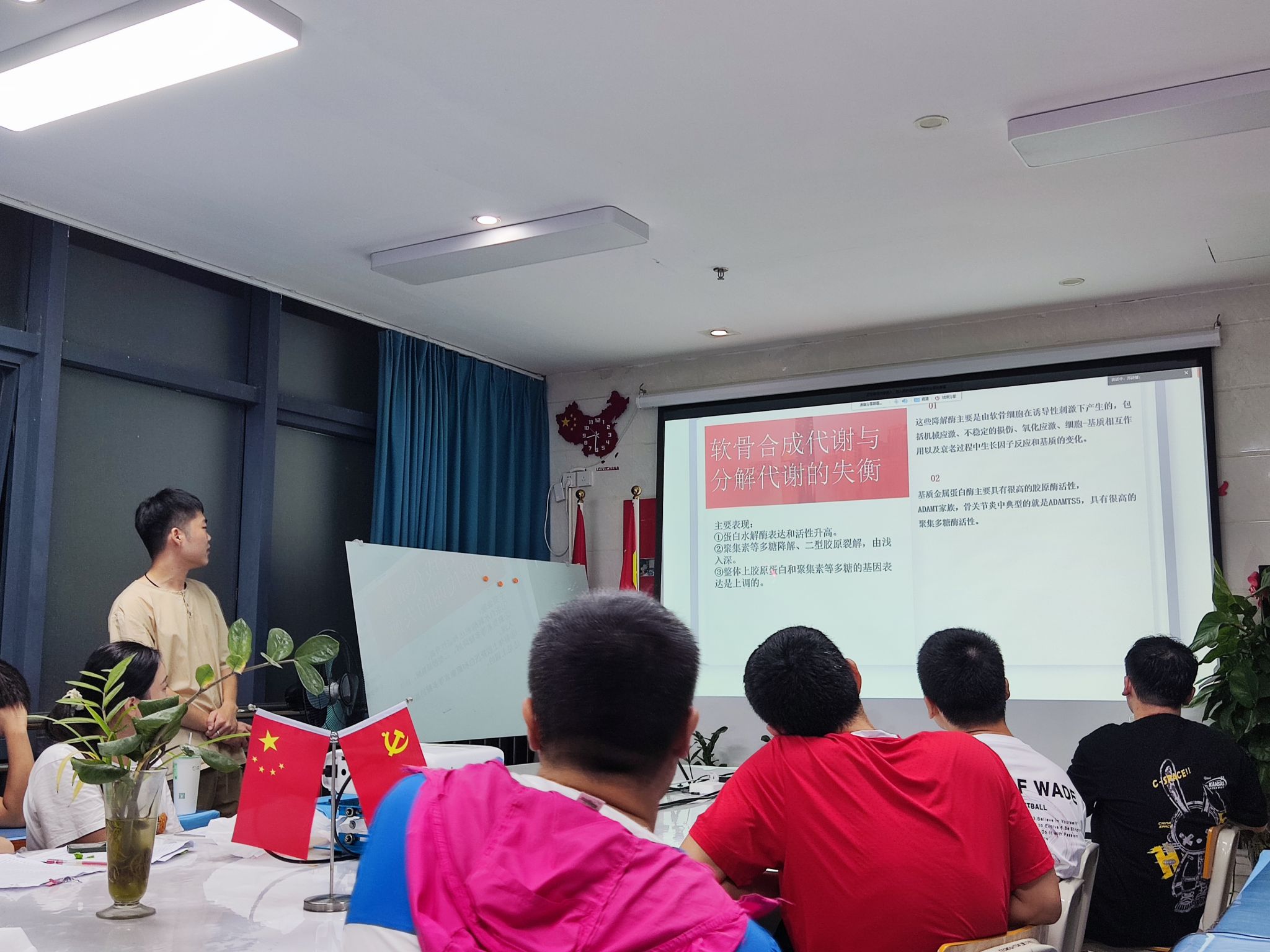
Aging and osteoarthritis: Central role of the extracellular matrix
衰老与骨关节炎:细胞外基质的中心作用
主讲人:苏诗博
Ageing Research Reviews 丨Published:24 July 2017丨Issue Date:31 July 2017丨Pages:21-26丨DOI: http://dx.doi.org/10.1016/j.arr.2017.07.004
ABSTRACT:
Osteoarthritis (OA), is a major cause of severe joint pain, physical disability and quality of life impairment in the aging population across the developed and developing world. Increased catabolism in theextracellular matrix (ECM) of the articular cartilage is a key factor in the development and progression of OA. The molecular mechanisms leading to an impaired matrix turnover have not beenfully clarified,however cellular senescence, increased expression of inflammatory mediators as well as oxidative stress in association with an inherently limited regenerative potential of the tissue, are all important contributors to OA development. All these factors are linked to and tend to be maximized by aging. Nonetheless the role of aging in compromising joint stability and function in OA has not been completely clarified yet. This review will systematically analyze cellular and structural changes taking place in the articular cartilage and bone in the pathogenesis of OA which are linked to aging. A particular emphasis will be placed on age-related changes in the phenotype of the articular chondrocytes.
摘要:
骨性关节炎(OA)是发达国家和发展中国家老龄化人口中严重关节疼痛、身体残疾和生活质量下降的主要原因。关节软骨细胞外基质(ECM)分解代谢增强是骨性关节炎发生发展的关键因素。导致基质更新受损的分子机制尚未完全阐明,然而,细胞衰老、炎症介质表达增加以及氧化应激与组织固有的有限的再生潜力有关,这些都是骨关节炎发生的重要因素。所有这些因素都与衰老有关,而且往往会随着年龄的增长而最大化。然而,衰老在OA关节稳定性和功能受损中的作用尚未完全阐明。本综述将系统地分析骨关节炎发病机制中关节软骨和骨的细胞和结构变化,这些变化与衰老有关。将特别强调关节软骨细胞表型与年龄相关的变化。

